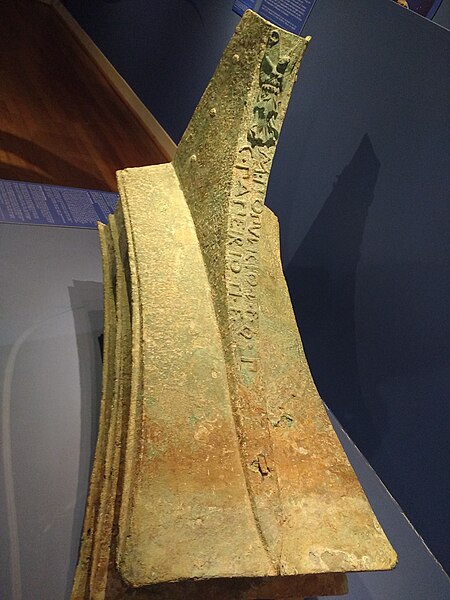In warfare, ramming is a technique used in air, sea, and land combat. The term originated from battering ram, a siege weapon used to bring down fortifications by hitting it with the force of the ram's momentum, and ultimately from male sheep. Thus, in warfare, ramming refers to hitting a target by running oneself into the target.
The ram of Olympias, a reconstruction of an ancient Athenian trireme.
Bronze Roman naval ram, dated before 241 B.C. Includes winged decoration of the goddess of Victory.
View from US destroyer Caron at the moment of ramming by Soviet light frigate (FFL 824) on 12 February 1988
A battering ram is a siege engine that originated in ancient times and was designed to break open the masonry walls of fortifications or splinter their wooden gates. In its simplest form, a battering ram is just a large, heavy log carried by several people and propelled with force against an obstacle; the ram would be sufficient to damage the target if the log were massive enough and/or it were moved quickly enough. Later rams encased the log in an arrow-proof, fire-resistant canopy mounted on wheels. Inside the canopy, the log was swung from suspensory chains or ropes.
Medieval battering ram in Italy
Replica battering ram at Baba Vida, Vidin, Bulgaria
An Assyrian battering ram attacking an enemy city, c. 865–860 BC
Replica battering ram at Château des Baux, France







